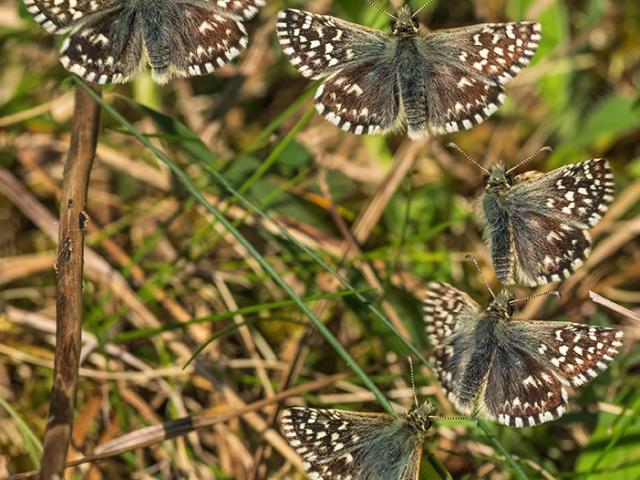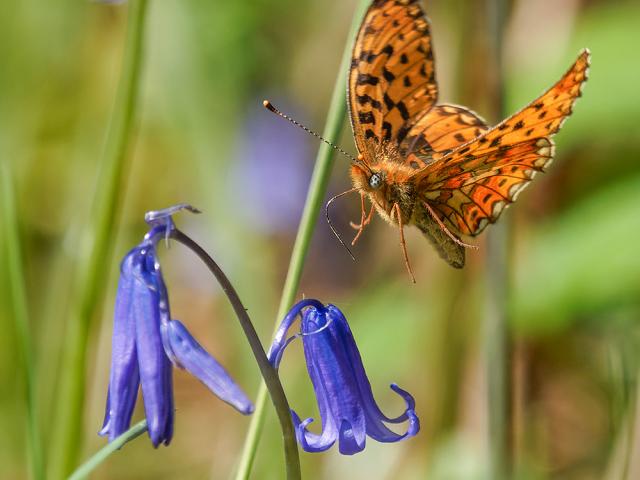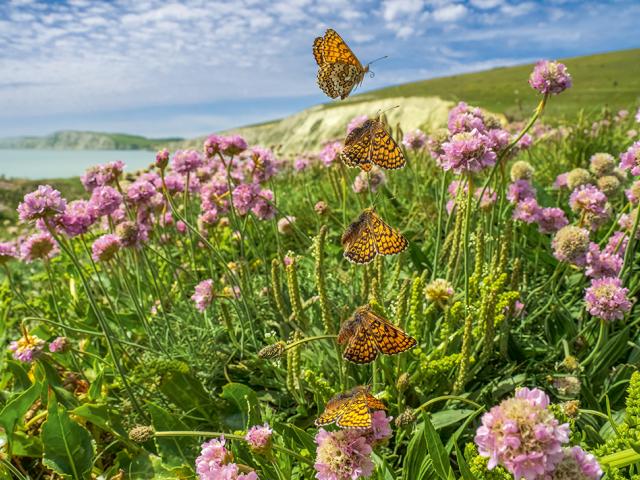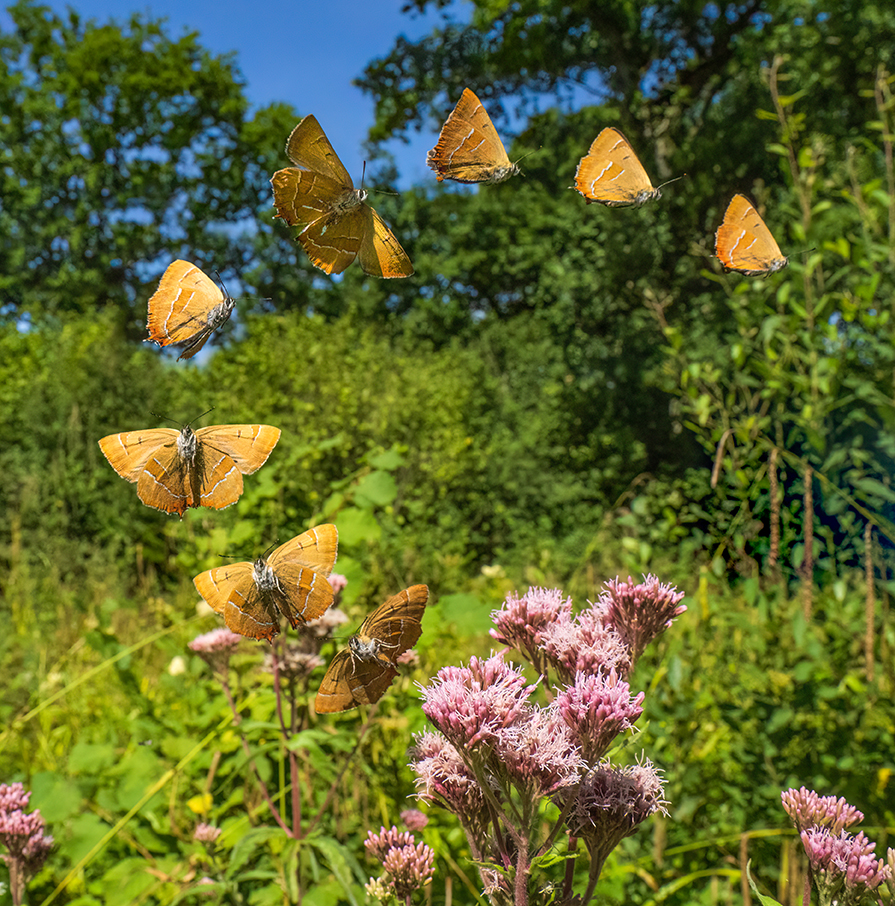Wildlife photographer Andrew Fusek Peters shares his journey to having a more mindful experience when photographing butterflies
Back in 2018, summer’s warmth persisted into October. I had just been diagnosed with a serious illness and while awaiting surgery, could only sit in our back garden and try not to think about the future. The word ‘mindful’ seemed appropriate on those hot, lingering afternoons when the Painted Ladies and Small Tortoiseshells enjoyed the flowers’ nectar.
I started trying to work out how to capture the aerial antics of lepidoptera. After many false starts and blurry pictures, I got a few decent results. While I was in the present, focused on such immediate wonder, I briefly forget about the future. Here, in the moment, at 1/4000 of a second, was slipstreamed grace.
After the surgery, I fell head over heels for butterflies and an exciting journey began. When the photos started to gain media attention, I was approached by a publisher and began to work on a book of UK species. The life cycle of butterflies is all about transformation and my own path felt equally transformative. When I received the medical ‘all clear’, I suddenly had much to live for and a safari was on the cards.

Coming into focus
I soon found myself crouching on Somerset slopes to capture Heath Fritillary, and bitten by midges for Scotch Argus in the Scottish Borders. There was a further transformation within me. To truly admire butterflies, surely one needs to understand their history and struggles. My mind filled with facts – who knew the Painted Lady had the longest migration route of any species on earth? I became mindful about habitat, landscape and decline. Many of the butterflies I photographed subsist in fragmented habitats and 80% of UK butterflies have declined in the last five decades. I don’t want my book to be an epitaph.

I can do nothing about intensive farming and the loss of flower-rich grasslands. But I can play my part when visiting reserves – being careful and respectful of both butterflies and their nectar sources. The days of collecting are gone, and our modern tick list should include following ethical guidelines to avoid disturbing habitat or species, and to leave no trace.
“This is my mindful calling and purpose, to show butterflies in a fresh light.”
The here and now
Photography has a vital role to play in conservation. Aside from recording their presence, a good picture of a butterfly in action has the power to make people stop and think. This is my mindful calling and purpose: to show butterflies in a fresh light. Flight shots and elegant high-speed sequences give us a window into the lives of these creatures. Such images might help more people see that these gravity-defying acrobats are worth saving.

Finally, on a hot summer day in 2022 in Grafton Wood, Worcestershire, after four hours of not seeing any of the Brown Hairstreaks I was looking for, I came upon a male nectaring on Hemp Agrimony. The resulting sequence was a wide-angle dream come true, showing the butterfly, wings spread, slap bang in the mindful moment, fitting perfectly into a backdrop topped with an impossibly blue sky.
Being among butterflies always feels both healing and calming. There is a different state I enter into as I watch, trying to frame the exuberance and fragile beauty of their flight. Right here, right now, it is the butterfly that pins me to the moment.
Andrew’s mindful tips for photographing butterflies
- When arriving at a site, our minds are often on the species we want to see. It’s equally important to enjoy being in nature, looking at what’s around us.
- A butterfly always has context. Learn about its habitat, nectaring flowers and species season. The more you know, the richer your enjoyment.
- Tread lightly. Be aware of the fragility of bushes and flowers. It’s basic politeness not to trash a butterfly’s living room.
- Leave no trace. There is nothing lovelier than having a picnic at a nature reserve but please take your rubbish home or dispose of it in a bin on site.
- If you find your target species, take the time to enjoy it. As 17th-century naturalist John Ray put it: “What is the use of butterflies? To adorn the world and delight the eyes, to brighten the countryside like so many golden jewels. To contemplate their exquisite beauty is to experience the truest pleasure.”
Andrew Fusek Peters is a conservation wildlife photographer and a brand ambassador for Olympus. He is on long-term commission for the National Trust on the Long Mynd Nature Reserve. His new book Butterfly Safari is available to purchase now.


